Many wild plants around us are edible. Some are poisonous, but others are tasty and healthy. However, not all edible wild plants are safe to eat raw.
You might get hungry if you get lost in the woods or go on a long hike. It’s important to know which plants and foods are safe to eat raw to avoid getting sick or poisoned.
I’ve compiled a list of 21 edible wild plants you can safely gather from nature. Learn how to spot, collect, and prepare these plants, along with their nutritional benefits.
7 Key Takeaways on Wild Edible Plants
- Not all wild plants are safe to eat raw. It’s important to tell apart edible and poisonous plants. This is to avoid sickness or poisoning when foraging.
- Avoid plants with strong, bad smells, milky sap, umbrella-shaped flowers, bright berries, shiny leaves, and thorns or spines. They often show that the plant is toxic.
- All parts of the Amaranth plant are edible, including the seeds, leaves, and stems, which can be eaten raw or cooked. It is rich in proteins, fiber, and essential vitamins.
- Asparagus should be boiled before consumption to avoid nausea. It is high in vitamins C, B2, folic acid, and carotenoids but should be avoided by individuals with kidney diseases.
- Both the leaves and roots of Burdock are edible. Leaves need to be boiled to remove bitterness, while the roots have a mild, sweet flavor and are rich in antioxidants and vitamins.
- Cattails offer multiple edible parts, including the white base of the stalk, rootstock, and female flower spike. These parts can be eaten raw or boiled, providing fiber, vitamins, and minerals.
- Many wild plants, like chickweed, chicory, and dandelion, are nutrient-rich. Others include clover, curly dock, elderberry, juniper, and nettle. They provide essential vitamins, minerals, and antioxidants that are beneficial for health.
How to Tell If a Plant Is Not Safe to Eat
It isn’t always easy to identify whether wild plants are safe to eat or not. Before using plants as food, it’s important to ensure they aren’t poisonous or toxic.
Here are some of the most common signs that a plant should be avoided:
- Strong, Unpleasant Odor – The plant could have developed dangerous fungal toxins, especially if it emits a musty and rotting odor.
- Similar Smell to Pears or Almonds – Plants with a pear or almond smell have cyanide. Cyanide is very toxic. It can be fatal if eaten in large amounts.
- Milky Sap – Milky saps in the plant can often contain toxic compounds. An example of a plant with milky sap is dandelion stems, which you should avoid eating.
- Umbrella-Shaped Flowers – Many plants from the Umbelliferae family are toxic. The edible ones are often hard to identify.
- Yellow, White, or Red Berries – Plants with bright berries often show toxicity. They are tied to harmful substances.
- Shiny Leaves – Plants with shiny leaves often indicate the presence of dangerous chemicals. Some examples include poison ivy and oak, which can cause severe skin reactions.
- Thorns or Spines – Plants with sharp thorns or spines are protective features of plants. They are meant to deter animals from eating them. So, it’s best to steer clear of these plants. If the berries are aggregated, then they are safe to eat.
- Signs of Decay – Eating decaying plants can cause health issues. These include digestive problems and food poisoning. The same goes for plants that have been eaten by insects or worms.
Each year, over 100,000 exposures to toxic plants are reported to poison centers throughout the United States. These warning signs are your first defense against eating something that could make you sick.
Which Edible Plants Can You Forage and Eat?
A foraging guide can be helpful. It’s for those who want to explore nature’s abundance and live off its resources. Experienced foragers understand the beauty and simplicity of finding edible plants in the wild.
This section will introduce you to diverse wild edible plants you can forage and safely consume.
1. Amaranth (Amaranthus species) – Rich in Fiber and Vitamins B, C, and E
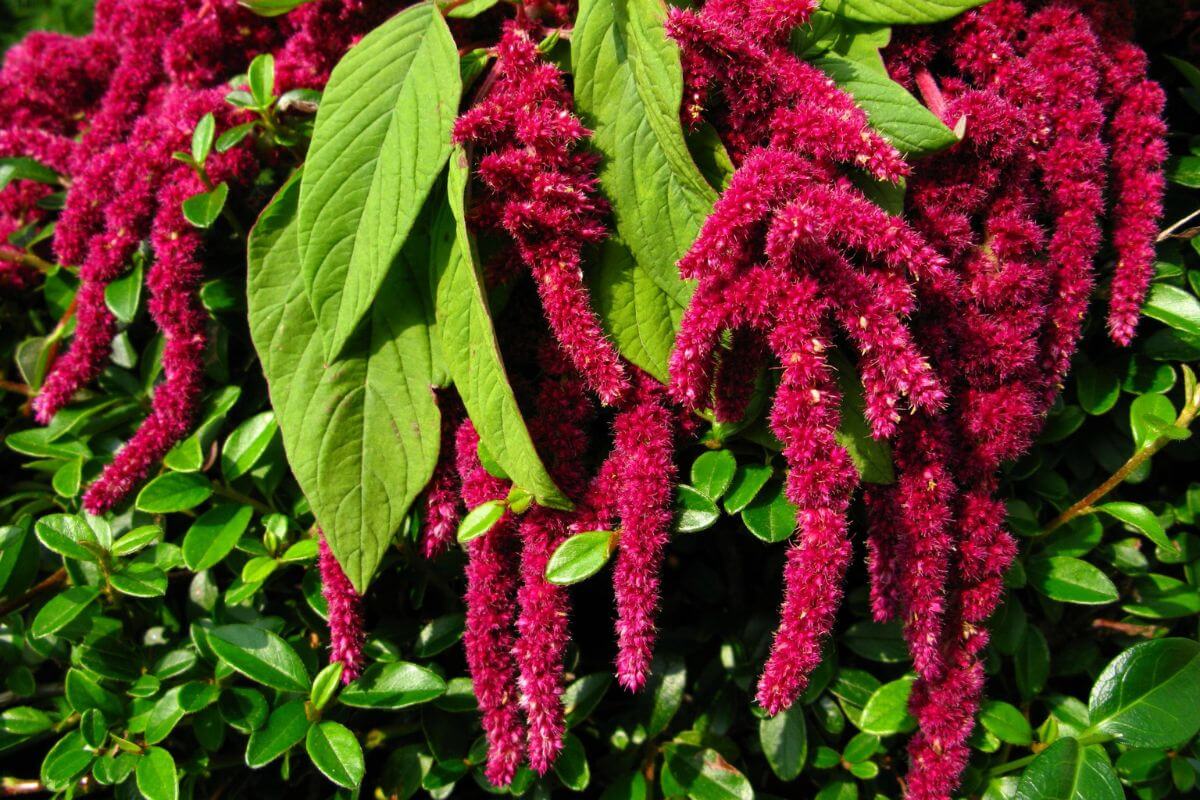
The Amaranth plant is originally from Mexico and is now widespread in many parts of the world. It’s common along roadsides or as weeds among crops. There are over 60 edible species of Amaranth.
All parts of the Amaranth plant are edible, but it may have spines that should be removed. The seeds are sweet and nutty, while the Amaranth leaves taste like spinach.
The young Amaranth plants can be eaten raw or boiled. The older ones can be shaken to retrieve the seeds, which can be eaten raw, boiled, or ground into flour.
Amaranth is also very nutritious. This edible weed is rich in high-quality proteins and contains 8 essential amino acids. It is also fiber-rich and has good amounts of vitamins B, C, and E.
2. Asparagus (Asparagus acutifolius) – Rich in Vitamins C, B12, B2, Folic Acid, and Carotenoid
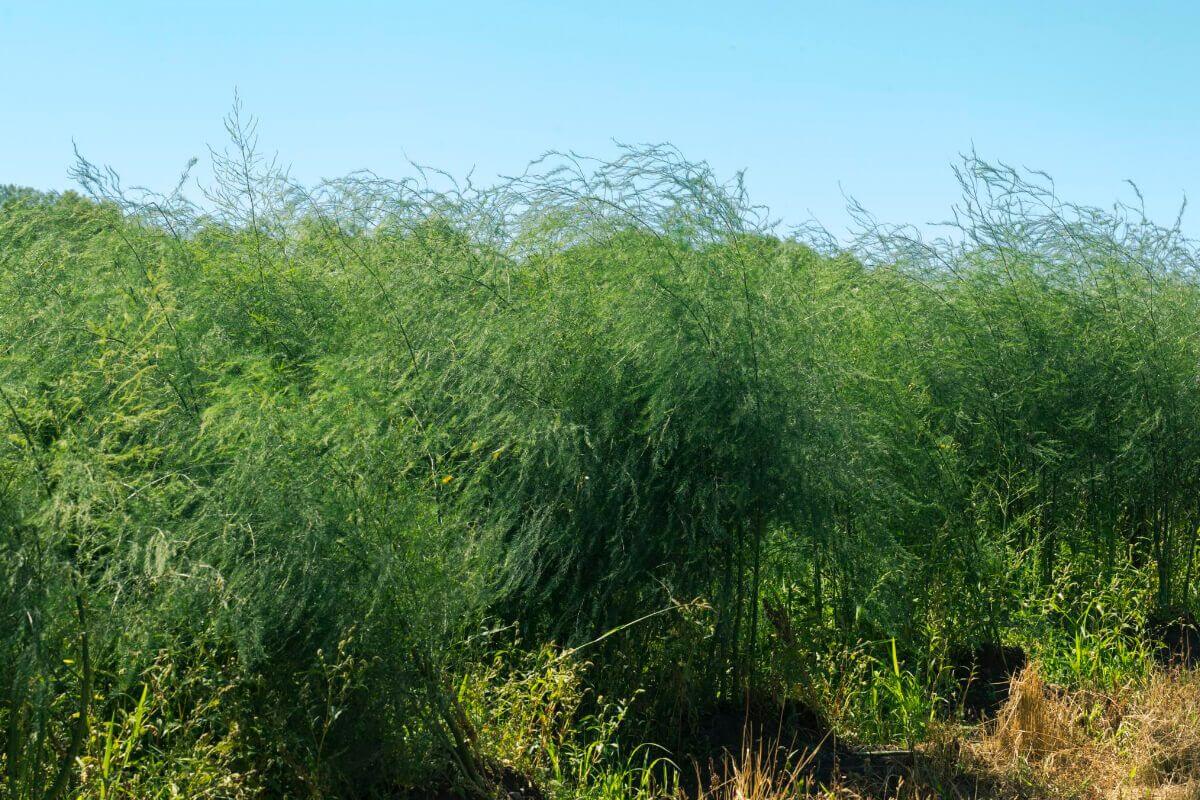
Asparagus plants can be found in all temperate areas of the world. They grow in open fields and along fences but prefer shaded areas. Asparagus sprouts in the spring and can always be found in clusters resembling thin green fingers.
Asparagus stems should be cut at the base before they have grown leaves. They must be boiled for 10-15 minutes before being eaten. Otherwise, they can cause nausea or intestinal problems. They also have slightly bitter flavors.
Asparagus is rich in vitamin C, vitamin B2, folic acid, and carotenoid. Since this plant is rich in nitrogen compounds, it shouldn’t be eaten by people with kidney diseases.
3. Burdock (Arctium lappa) – Nutritional Powerhouse With Antioxidants, Fiber, Vitamins, and Minerals
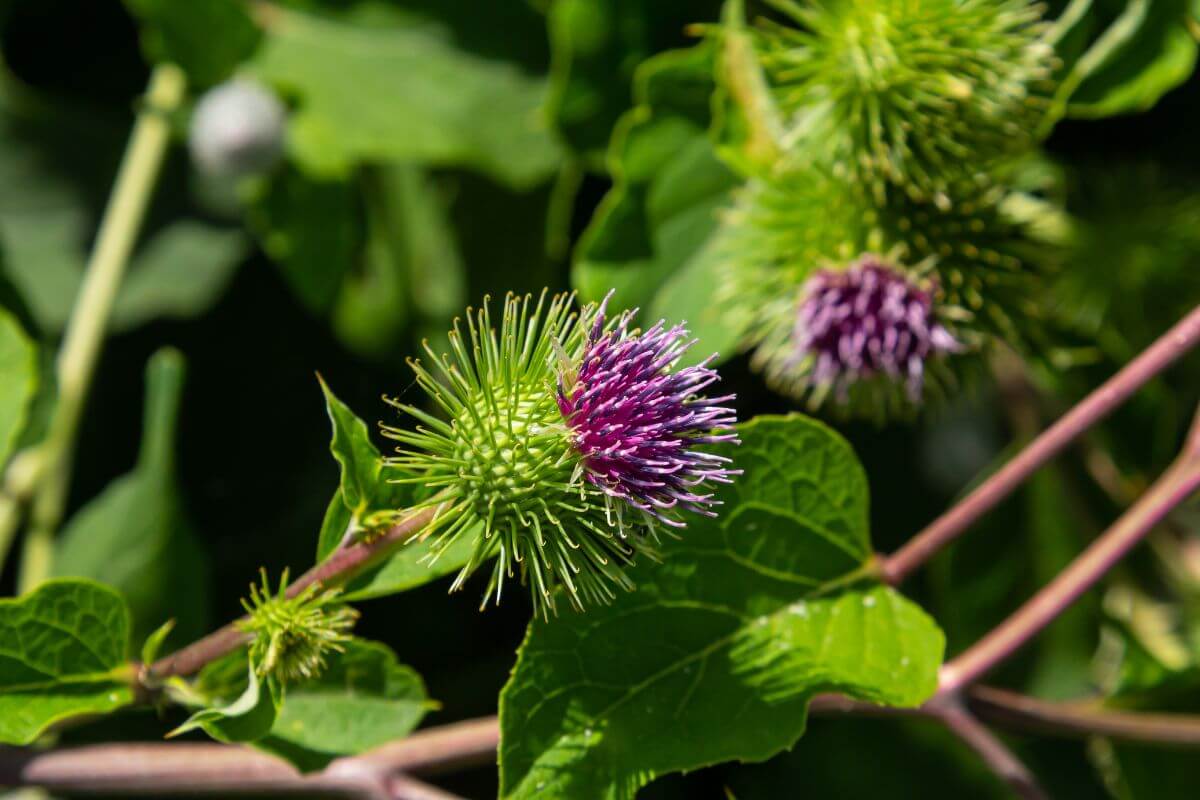
Burdock plants are from the Eastern Hemisphere’s temperate regions. They have spread to the Western Hemisphere. They have large leaves and purplish thistle-like flower heads.
Burdock leaves and peeled stalks are edible despite their bitter taste. You can consume them raw or boiled. Boiling the leaves twice removes the bitterness, making them more palatable.
On the other hand, the root has a mild, earthy flavor with a hint of sweetness and is crisp when peeled, boiled, and eaten. Aim to harvest first-year roots in the fall or before the spring shoots appear for the best taste and tenderness.
Burdock is a nutritional powerhouse, rich in antioxidants, vitamins, minerals, and fiber.
4. Cattail (Typha) – Rich in Fiber and Can Be Used as Flour or Flavoring
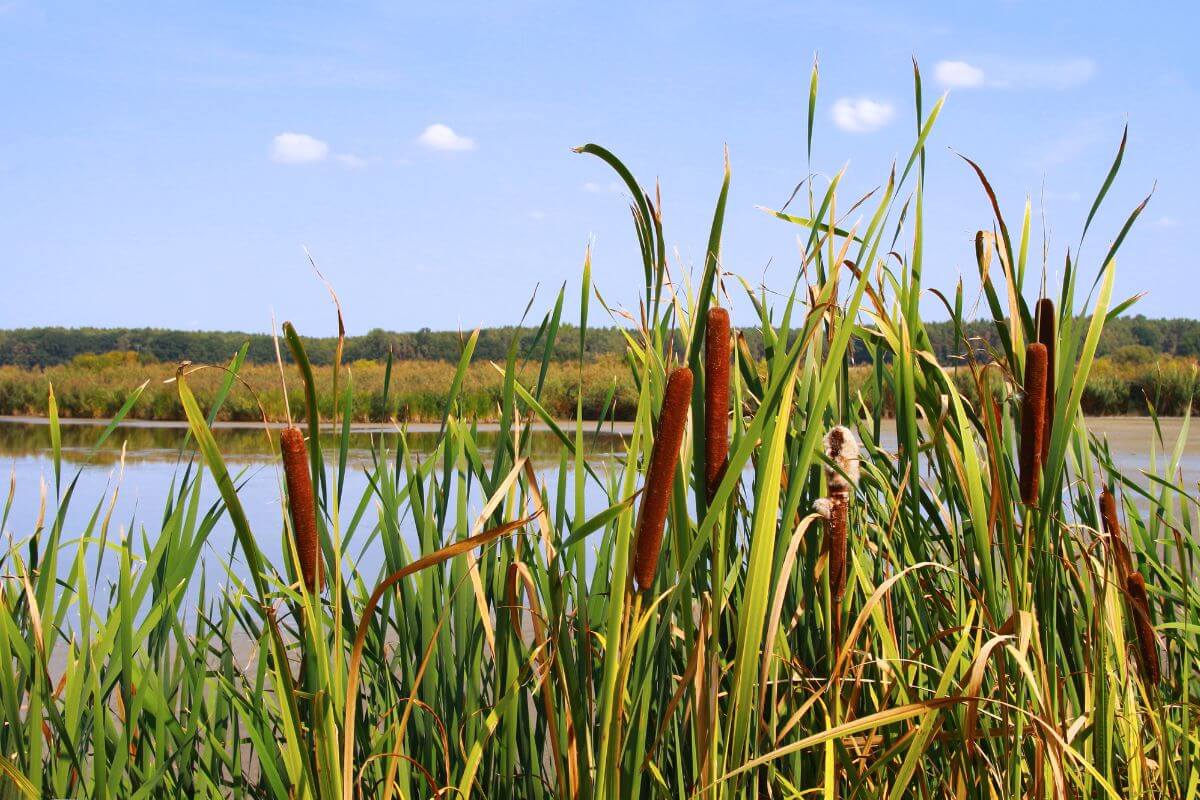
Cattails, also called punks, grow near the edges of freshwater wetlands. They’re a common sight in temperate and cold regions worldwide and were a key food for many Native American tribes. This plant is a survival all-star, with nearly all its parts being edible.
When harvesting a cattail, be sure to remove the outer layer, as it offers several tasty options:
- White Base of the Stalk and Lower Leaves – This is best eaten raw or boiled.
- Rootstock (Rhizomes) – These are found underground, so wash off the mud and boil or eat the stem raw.
- Female Flower Spike – The corn-dog-looking female flower spike can be eaten in late spring when it first develops. It has a corn-like taste.
You can also use the crushed roots or the yellow pollen as flour, adding a unique flavor to your bread or cake. Cattails’ fiber, vitamins, and minerals keep you full and offer a health boost.
5. Chickweed (Stellaria media) – Antioxidant-Rich With Tender Leaves
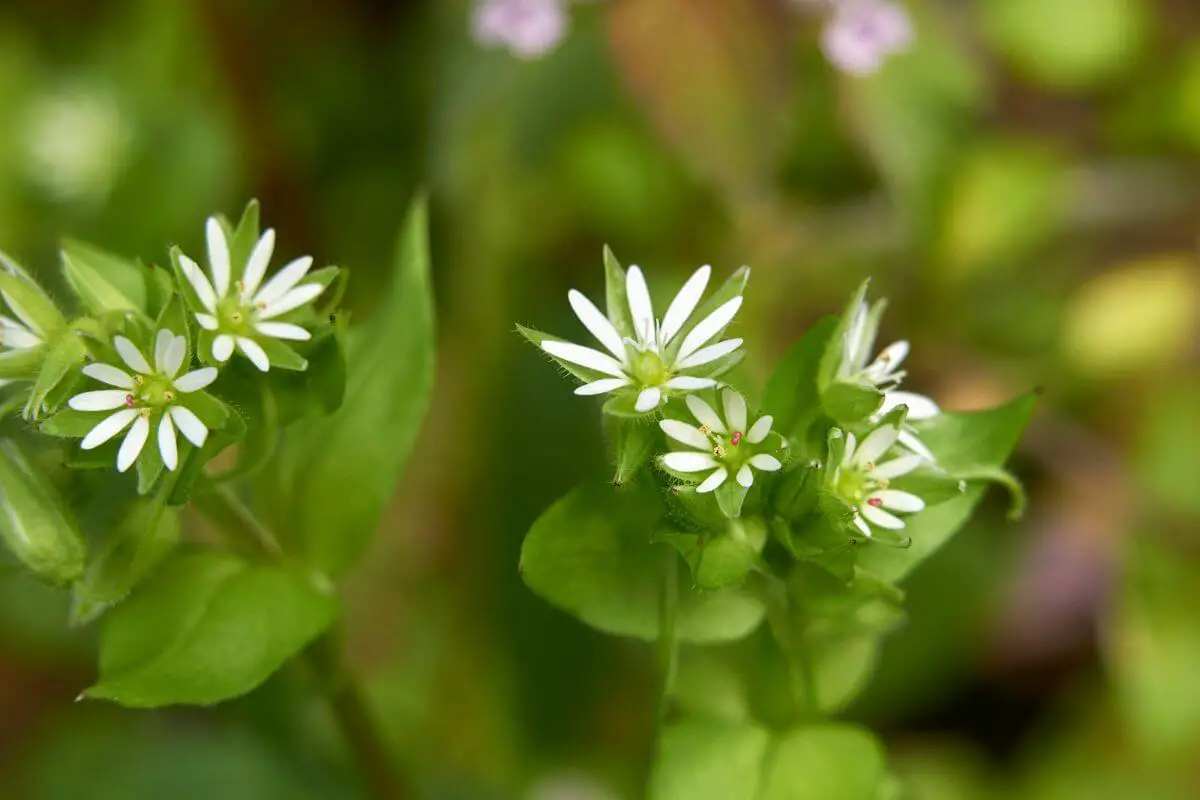
Chickweed is a cool-weather plant that thrives in temperate and arctic zones. It’s native to Europe but has spread worldwide, even to far north and sub-Antarctic islands.
This plant is easily recognized by its oval leaves, small white flowers atop star-shaped sepals, and a fine line of hair running along the stem. You’ll spot its flowers blooming between May and July.
Every part of chickweed is edible, whether boiling or eating the leaves raw. This nutrient-packed plant offers a mildly flavored option for your plate thanks to its tender leaves. You also get vitamins and minerals like vitamin C and chlorophyll.
Remember to be gentle if you’re out foraging and spot some chickweed. Just snip off the tender top leaves with scissors to harvest it.
6. Chicory (Chicorium intybus) – Low-Calorie and High-Fiber Plant Packed With Nutrients
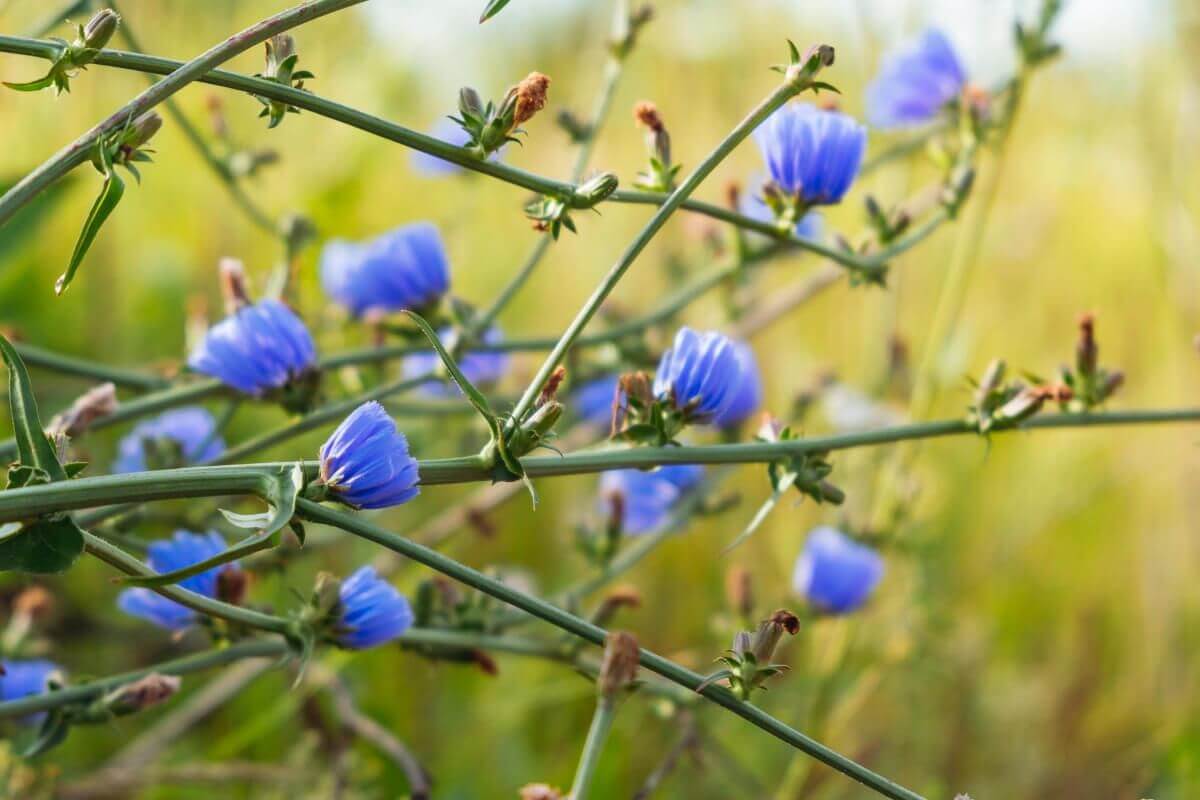
Chicory grows as a weed in most of North America, Europe, and Asia. It can be found in old fields, waste areas, weedy lots, and roads.
This bushy plant can grow up to 6 feet tall. It is one of the most well-known wild plants, as its sky-blue flowers make it easy to identify. The leaf resembles other wild edible plants, such as the dandelion.
All parts of the chicory plant are edible:
- Chicory Flowers – They can be eaten raw, like a salad.
- Chicory Leaves – They can also be eaten raw but can be bitter. That’s why it’s better to mix them with other more palatable plants or cook them to reduce the bitterness.
- Chicory Roots – They can be used as a coffee substitute after roasting and grounding them.
Chicory is low in calories, high in fiber, and packed with vitamins and minerals like calcium, manganese, copper, iron, and potassium. It’s a great source of vitamins A, C, K, carotenoids, and folic acid.
7. Clover (Trifolium) – Unique-Tasting Plant Rich in Iron
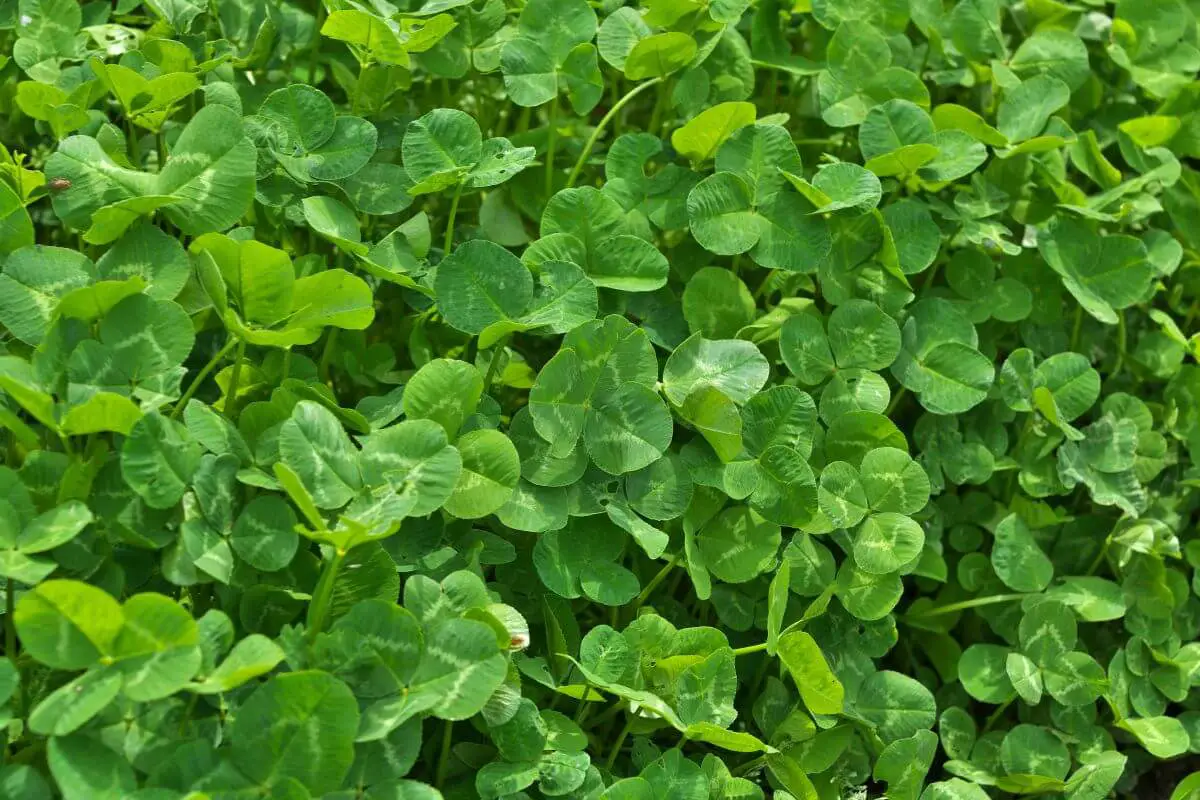
Clovers are everywhere, from fields to roadsides, making them easy to spot. They are a reliable source of nutrition as you can eat the whole plant — leaves, flowers, and roots.
Clovers have a unique taste. Some people find the leaves’ slightly bitter, grassy taste interesting. Others prefer to boil the leaves, which brings out a sweeter flavor. Clover flowers, especially those from white ones, offer a pleasant, slightly sweet taste whether you eat them raw or cooked.
Clovers contain isoflavones and polysaccharides, which are great for your health. They’re a solid dietary fiber, vitamin C, and iron source.
8. Curly Dock (Rumex crispus) – Nutritious Stalk With Tender Leaves
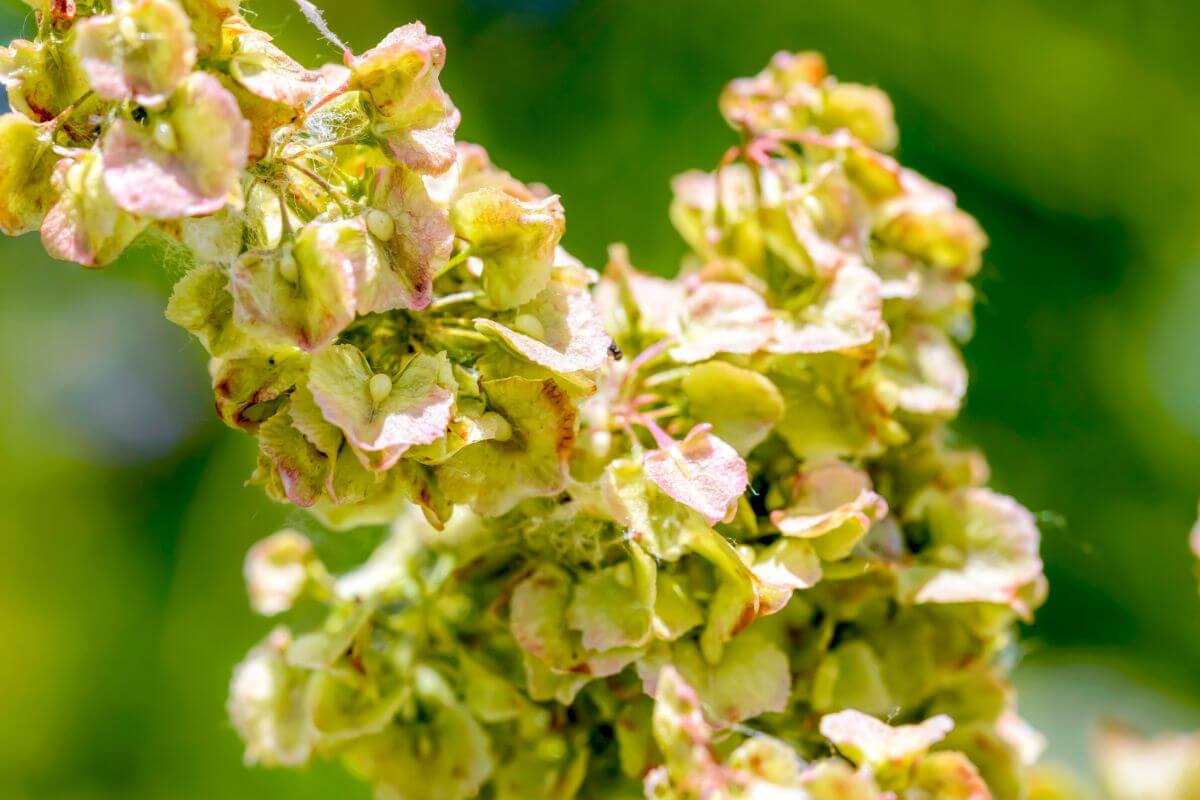
Curly dock is found on continents, including Europe, North America, South America, and Australia. Its vibrant, long red stalk can grow up to three feet tall. This makes it easy to recognize in many places, from weedy meadows to garden edges.
The stalk of the raw and boiled curly dock is a nutritious option. However, you must first peel off the tough outer layers to enjoy it. The young and tender leaves of the curly dock plant bring a tart flavor to the table and are a great addition to salads.
These leaves contain oxalic acid, which gives them a naturally bitter taste. Boil the leaves and change the water several times to remove this bitterness. This will help you get the most of the plant’s rich vitamins and minerals, especially iron and vitamins A and C. Consuming the leaves in small quantities directly in a salad is a viable alternative if cooking isn’t an option.
9. Dandelion (Taraxacum officinale) – Makes for a Nutritious Salad
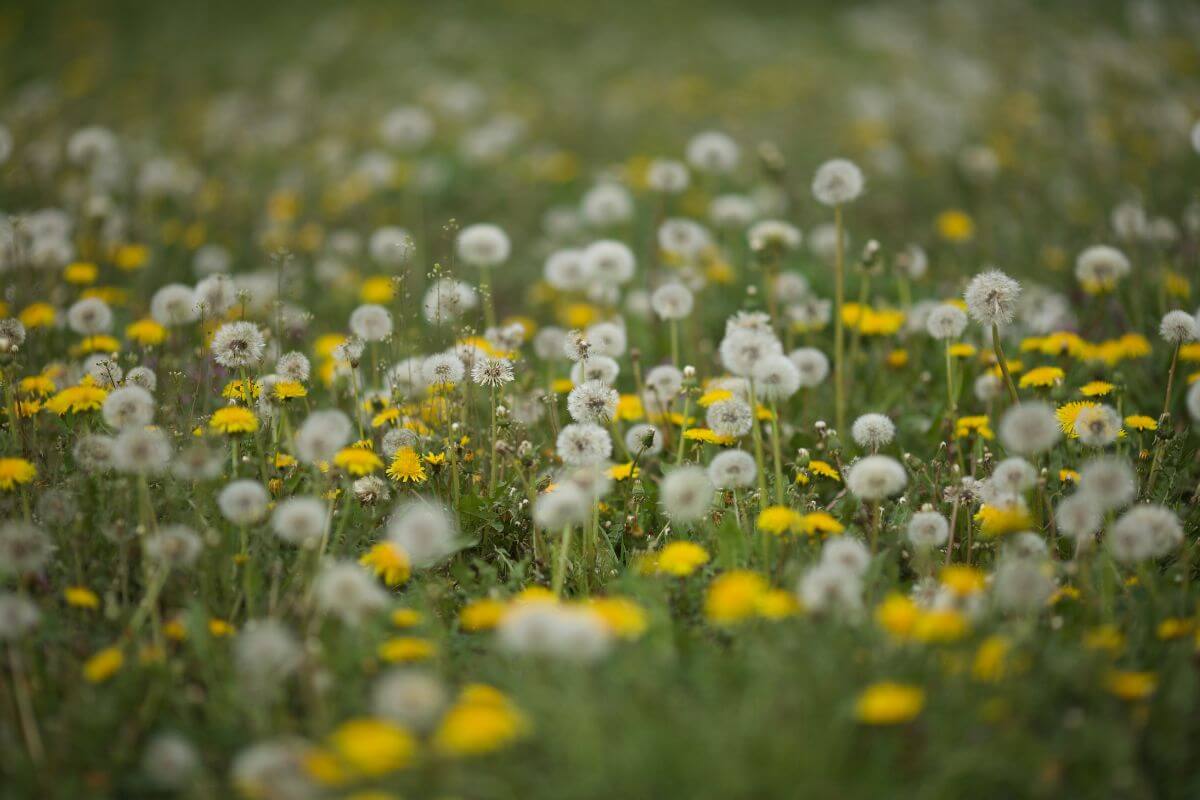
Dandelions are common weeds throughout the Northern Hemisphere. They grow in open, sunny areas.
A dandelion’s leaves and buds can be eaten as a salad or boiled for a few minutes. They taste slightly bitter and tangy. The dandelion roots are also edible but must be boiled first. They can also be used as a coffee substitute.
Dandelions are very nutritious. The greens are an excellent source of vitamins A, C, and K. They are also rich in calcium, iron, magnesium, and potassium. The plant is full of antioxidants, mainly found in the flowers.
10. Elderberry (Sambucus canadensis) – Packed With Antioxidants With Anti-Inflammatory Effects
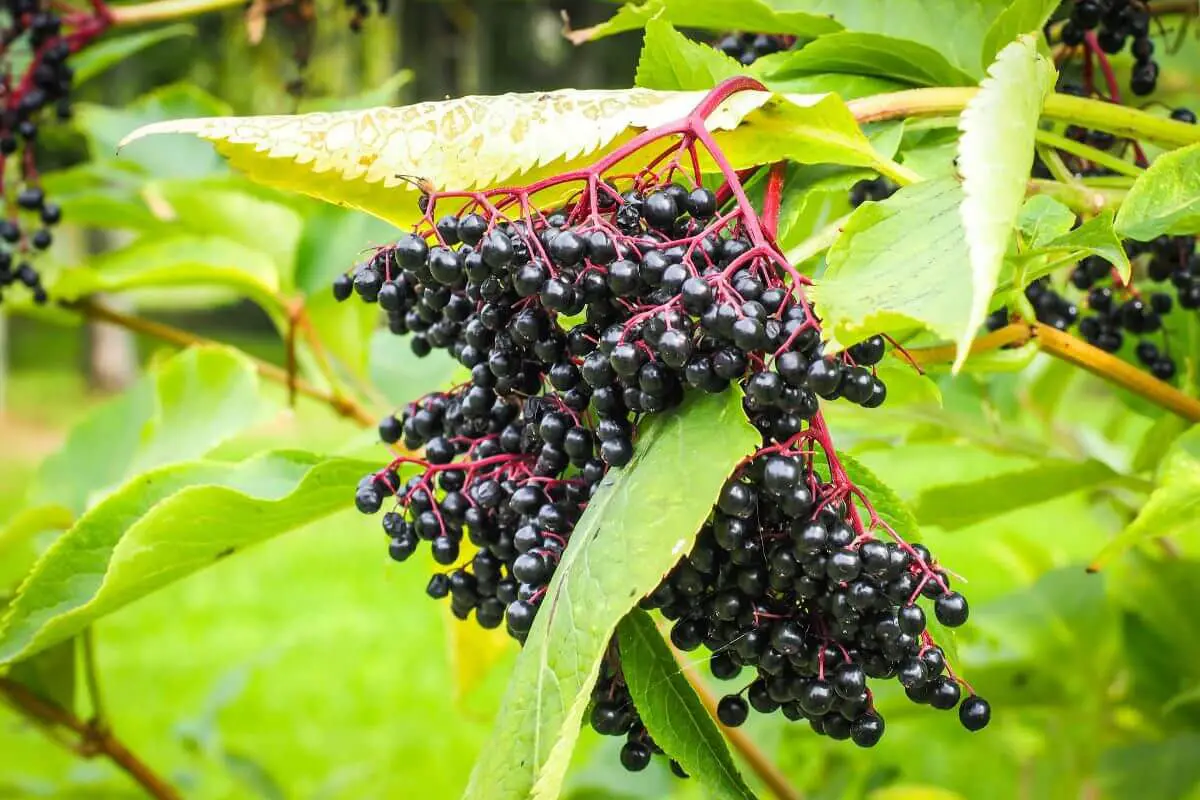
Elderberry is a shrub with white, fragrant flowers that grow in clusters. The fruits are small blackberries. It grows in most of eastern North America.
The only edible parts of the elderberry plant are the flowers and fruits, which must be cooked before consumption. The raw berries, bark, and leaves are poisonous and can cause stomach problems.
The flowers can be soaked in water for 8 hours or more to make a drink. The berries can be tart, sweet, or bitter, depending on the elderberry variety.
The berries are packed with antioxidants, especially flavonols and anthocyanins. The latter is responsible for their dark color and anti-inflammatory effects. They are also high in vitamin C and phenolic acids.
- Learn more about Edible Wild Berries
11. Juniper (Juniperus species) – Antibacterial Plant That Tastes Like Tart
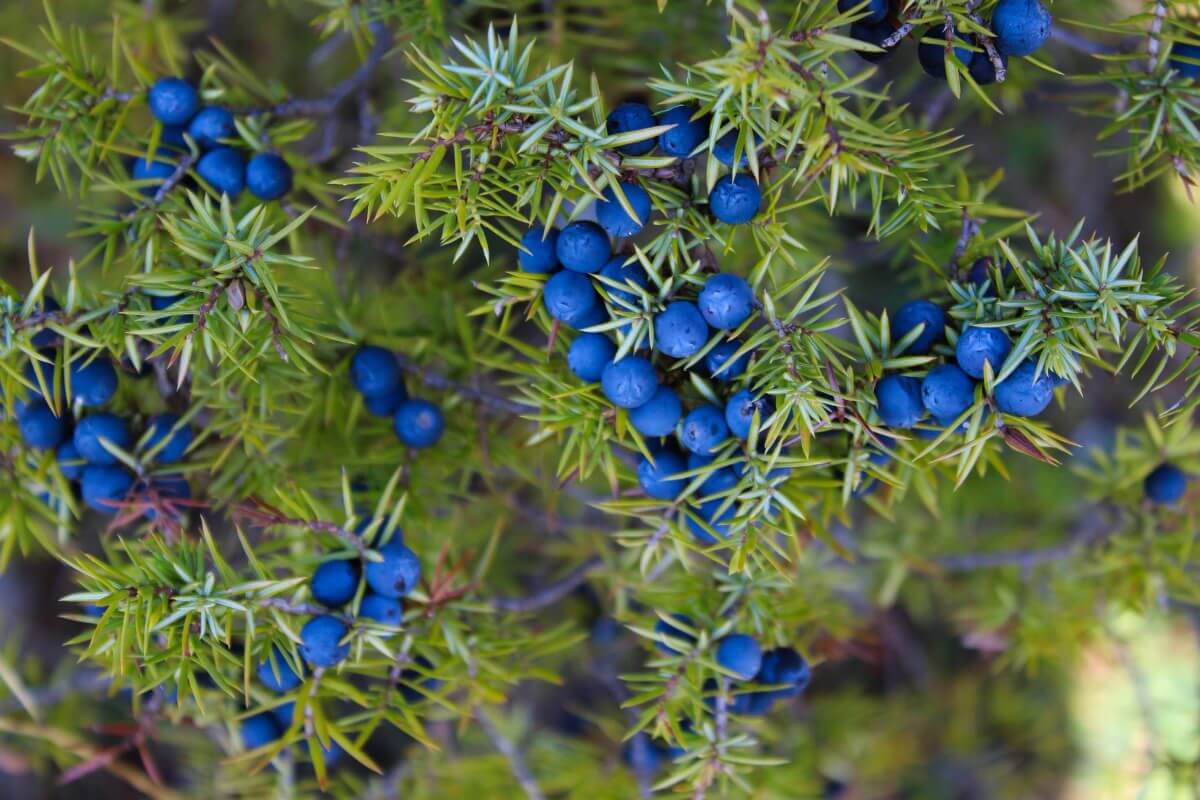
Junipers are evergreen shrubs or trees with a distinct, recognizable aroma similar to cedar trees. The leaves are scaly and grow tightly attached to the branches. These edible berry trees grow in much of Northern America and Europe. Their native habitat is open, dry, and sunny areas.
Juniper’s blue fruits are known as berries, but they are seed cones. They have a tart, pine-like flavor and can be dried or crushed for seasoning or eaten raw. The young twigs are also edible and can be gathered to make tea.
The Juniper berries have a lot of vitamin C and flavonoid antioxidants. Their volatile oils contain monoterpenes with anti-inflammatory, anticancer, antioxidant, and antibacterial properties.
12. Nettle (Urtica dioica) – Tastes Like Spinach With Essential Amino Acids
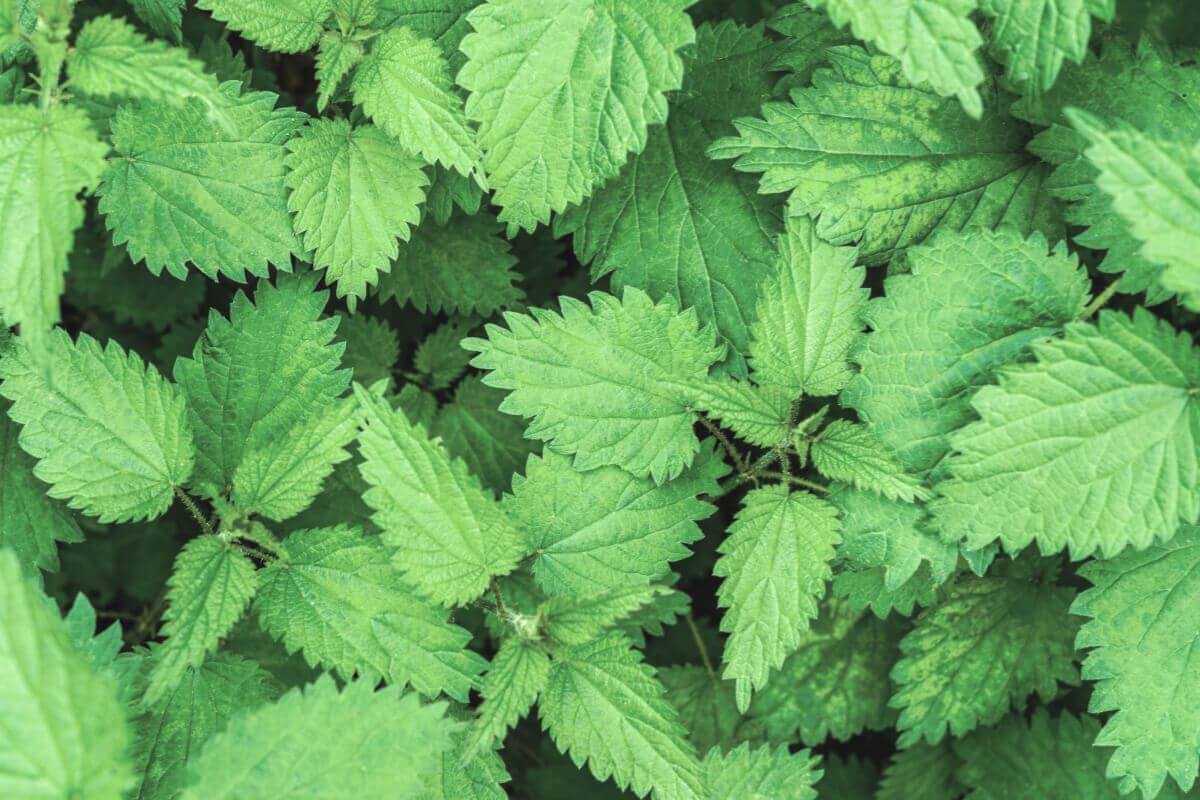
Nettles grow in moist woodlands or sites along streams, meadows, and ditches in Central and North America and Northern Europe. They can grow up to several feet high.
The leaves of the Nettle plant have fine bristles that cause a stinging sensation upon contact. Other plants very similar in appearance do not sting and are also edible.
Nettle leaves can be safely eaten after being dried or boiled for 10-15 minutes. They have a spinach-like flavor. The best are the young, tender leaves that grow in the spring.
Nettle is a very nutritious plant with many vitamins, minerals, fatty acids, polyphenols, and essential amino acids. Many of these nutrients also act as antioxidants.
13. Plantain (Plantago species) – Great as Salads or Pestos and Treatment for Diarrhea
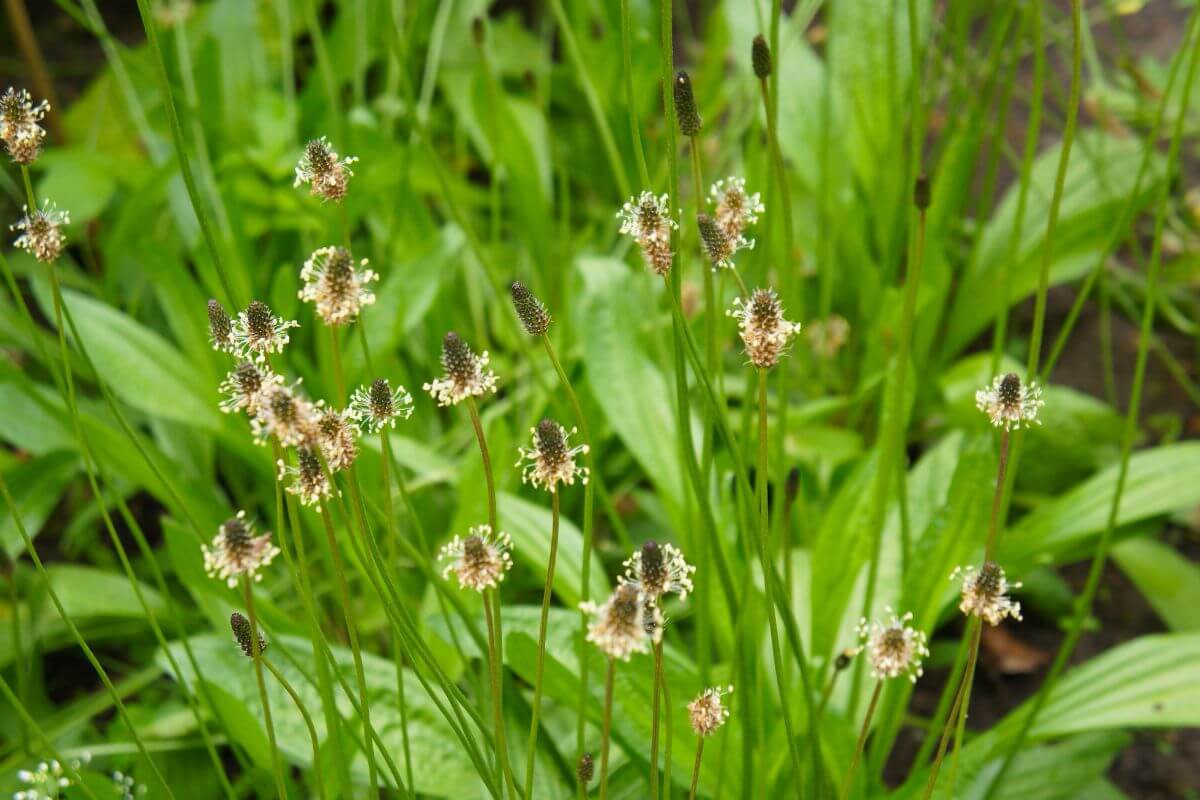
The plantain grows worldwide and is very common in lawns and along roads in the northern temperate zone.
The plantain plant is easily recognizable thanks to its leaves, which have 5 parallel veins and form a rosette. The two most common species are long, narrow leaves (Plantago lanceolata) and short, broader ones (Plantago major).
Young plantain leaves can be eaten raw as a salad, boiled, or crushed to make pesto. On the other hand, mature leaves should always be cooked as their taste is more bitter. The seeds, which have a nutty flavor, are also edible, raw, or roasted.
Plantain has good nutritional value but is most well-known for its officinalis properties. It relieves pain and irritation when soaked and applied to wounds and sores. A tea from the leaves treats diarrhea, while the seeds are laxatives (source).
14. Purslane (Portulaca oleracea) – Sour-Tasting Leaves Rich in Omega-3
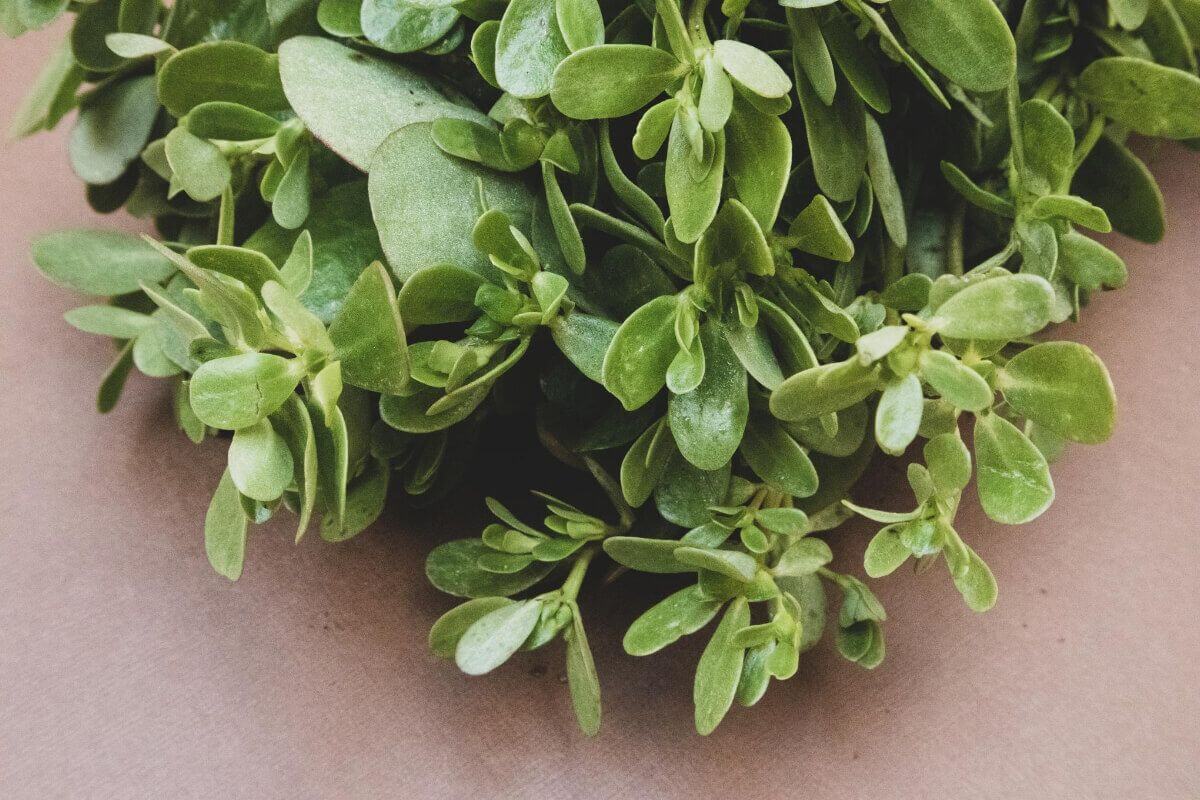
The purslane plant has flashy leaves and stems and grows near the ground. It is widespread worldwide and is often viewed poorly by farmers as it tends to overrun cultivated plants. It also grows in field margins and weedy areas.
All parts of the purslane are edible. The young leaves and stems can be eaten raw and have a fresh, sour flavor, while the older ones are more bitter. The leaves can also be boiled, while the seeds can be used as a flour substitute or eaten raw.
Purslane is rich in Omega-3 fats. They reduce cholesterol and prevent diabetes and heart disease.
15. Reed (Phragmites australis) – Excellent Sugar Source
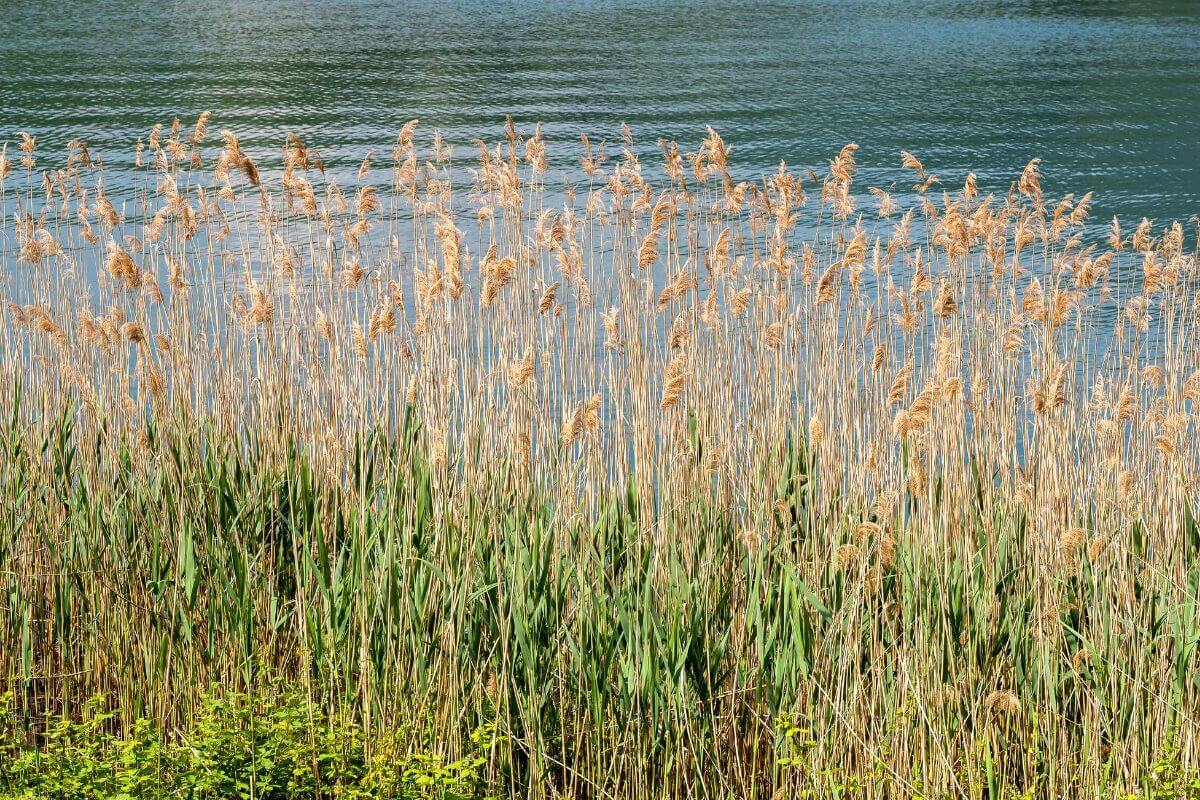
Reed is a coarse grass that can grow up to 12 feet tall, making it one of North America’s tallest marsh plants. It is common in open, wet areas in temperate regions.
Reed is not a well-known plant for forage, but it is very useful because all its parts are edible. It can be eaten raw or cooked and found in any season. The stems can be cut above ground and eaten boiled, while the part that grows underground is often too tough to eat.
The roots and rhizomes are an excellent sugar source. The stem and underground stem (rhizome) have been traditionally used for digestive problems. Reed herb contains vitamins A and C and some B vitamins.
16. Sassafras (Sassafras albidum) – Rich and Earthy Flavor With Vitamins A, B, K, and E
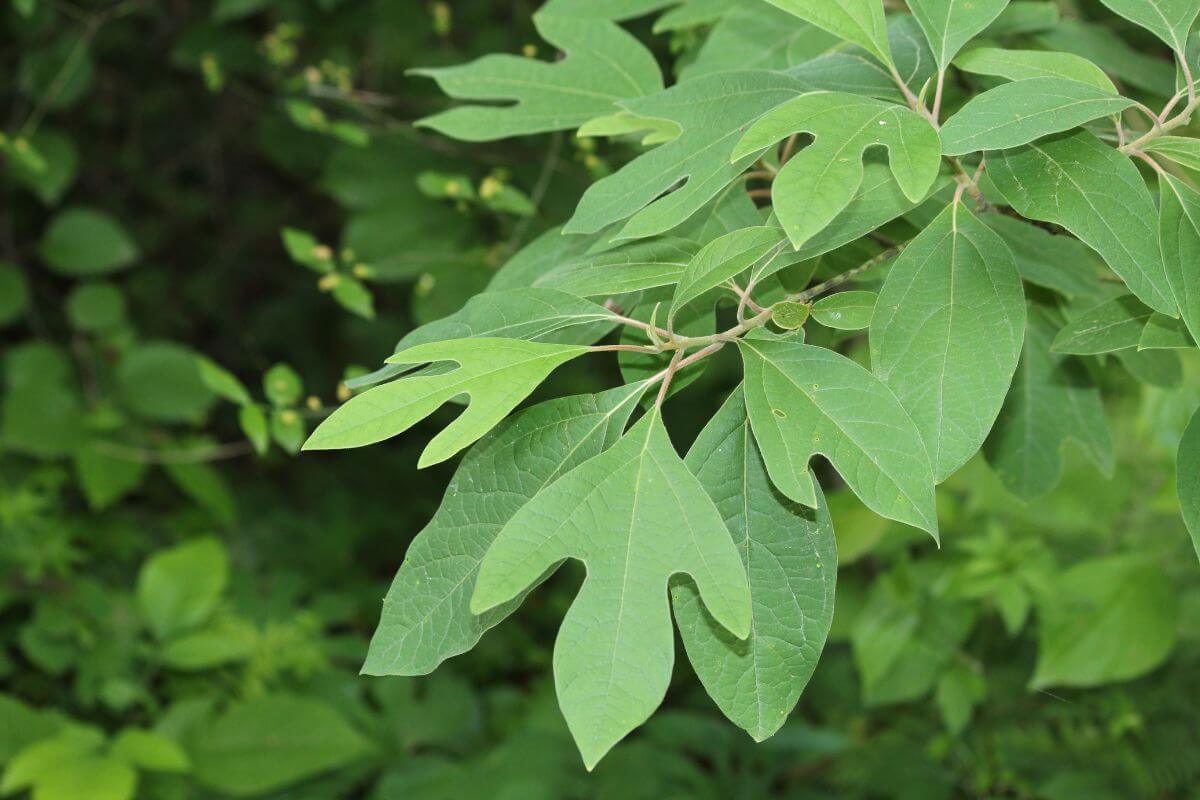
Sassafras shrubs and trees are common in eastern North America. They have a characteristic root beer smell, as they were once used as an ingredient in the beverage. They grow in open, sunny areas.
The sassafras root can be peeled and dried to make a tea with a heavy, earthy flavor. The young twigs and leaves can be eaten raw, dried, or added to soups.
This plant is rich in nutrients like vitamins A, B, K, and E. But it should be used in moderation, as it is proven to contain safrole, a poisonous chemical.
17. Sheep Sorrel (Rumex acetosella) – Vinegar-Tasting Plant Rich in Vitamin C, Iron, and Calcium
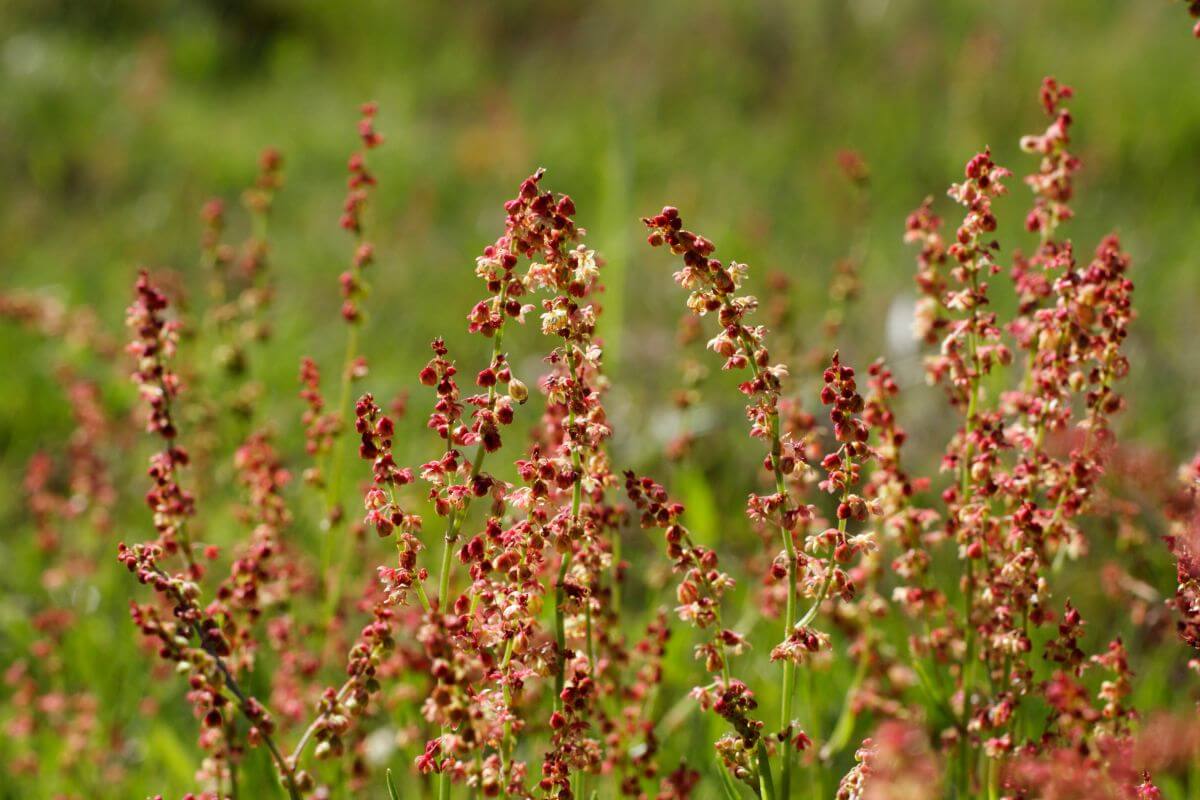
Sheep sorrel is common in old fields and North American and European areas. This plant grows mostly in dry, sandy soil. It has a tall, reddish stem and can reach 18 inches in height.
Sheep sorrel’s young leaves can be eaten raw or cooked, offering a sour flavor akin to vinegar. It’s important to note that eating them raw might be harmful due to the oxalic acid they contain. However, cooking the plant renders it safe to eat, as it destroys the toxic compound.
Sheep sorrel is rich in vitamin C and minerals like iron, magnesium, calcium, manganese, copper, and zinc.
18. Thistle (Cirsium species) – Rich in Sugar and Nutrients and Contains the Prebiotic Inulin
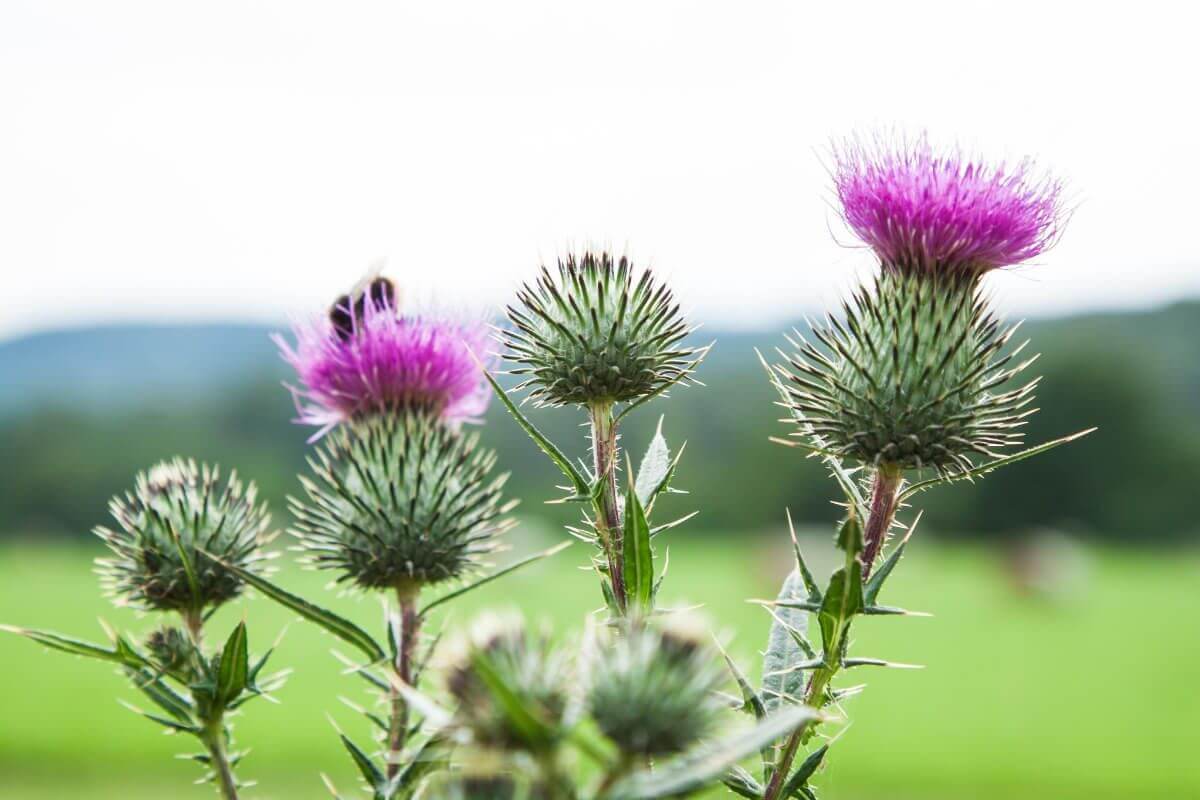
Thistles have long, prickly leaves and pink or purple flowers. They grow worldwide in dry fields and forests, preferring sunny areas. Every species is edible, making them a great plant for foraging beginners.
Opt for the tender specimens when consuming thistles. Remove the spines and peel the outer fibrous layer from the stems before boiling them. On the other hand, the roots can be enjoyed raw or cooked and boast a delightful sweetness.
The roots are very nutritious and are also rich in sugar. However, they contain inulin, which can cause digestive problems for some people.
19. Wild Onion and Garlic (Allium species) – Rich in Vitamins, Minerals, and Hormone-Like Substances
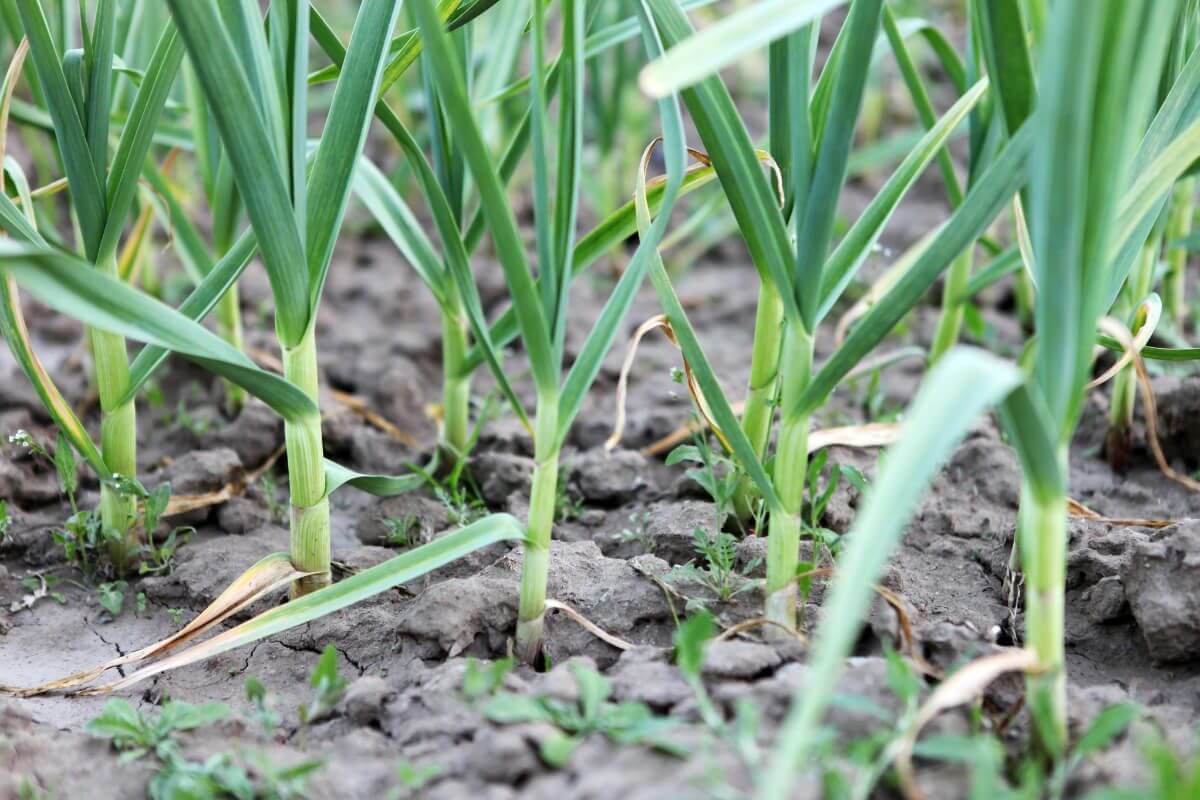
Many species of wild onion and garlic are easily recognizable by their smell. They are found in open areas in temperate zones. Onion grass is widespread in the Eastern United States during spring and early summer months.
Other similar bulbous plants don’t smell like garlic and onion and can be poisonous, so it’s important to be careful out in the wild.
The bulbs and young leaves of wild garlic and onions are edible and can be eaten raw or cooked. Despite their odor, the flavor of these plants is much more delicate than the cultivated varieties.
These plants are great sources of vitamins, minerals, and hormone-like substances. They also have antibiotic properties.
20. Wild Rose (Rosa species) – Sugary and Fruity Petals Rich in Vitamin C
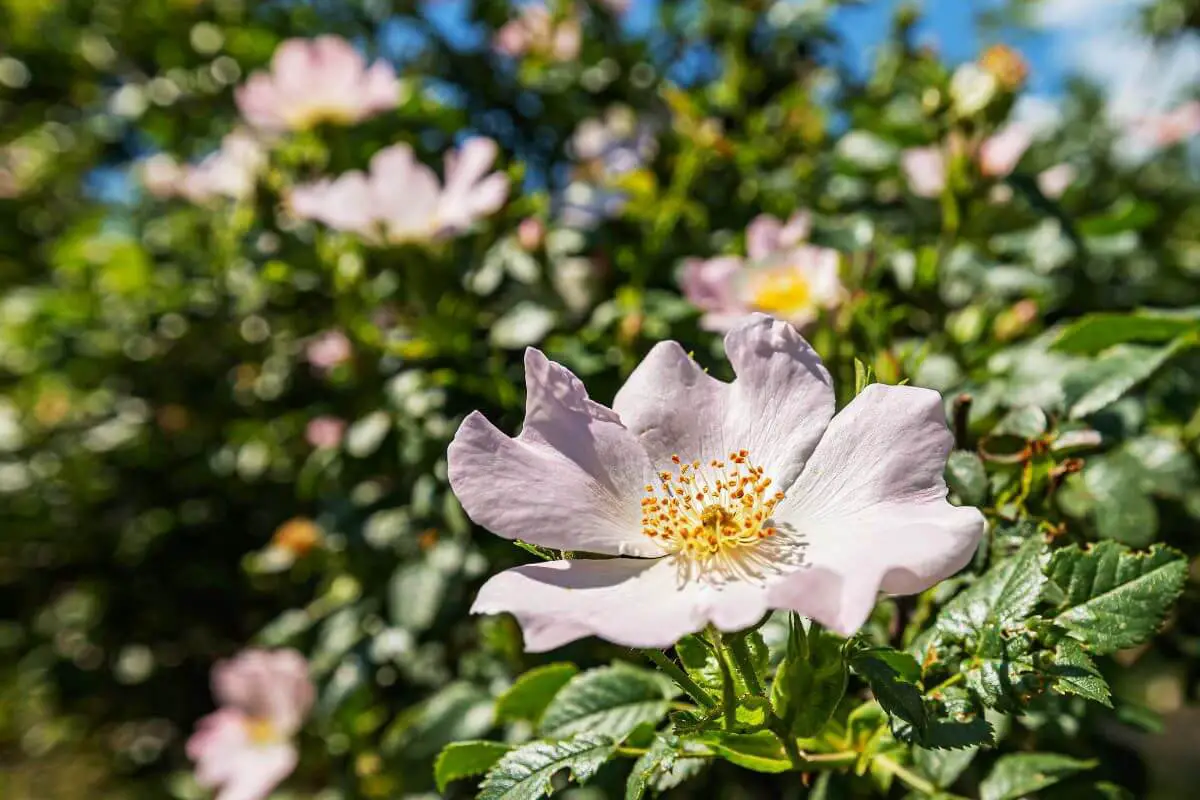
Wild roses are shrubs common throughout the Northern Hemisphere. In the Americas, there are over 100 varieties, all edible.
Wild roses grow in open woods and fields, preferring partly shaded areas. The red rose hips, which remain after the petals fall off, make the plant easily visible during the winter.
All parts of the wild rose plant are edible. The flowers and buds can be eaten raw or boiled and are very sweet. The young leaves can also be used to make tea. The sweetest petals are the pink and yellow flowers. The rose hips are sugary and fruity in taste.
The rose hips are renowned as an excellent source of vitamin C. They also contain beta-carotene and malic acid.
- Read more about Edible Blooms in the Wild
21. Wild Violet (Viola sororia or Viola papilionacea) – Nutritious and Tasty Anti-Inflammatory Flowers
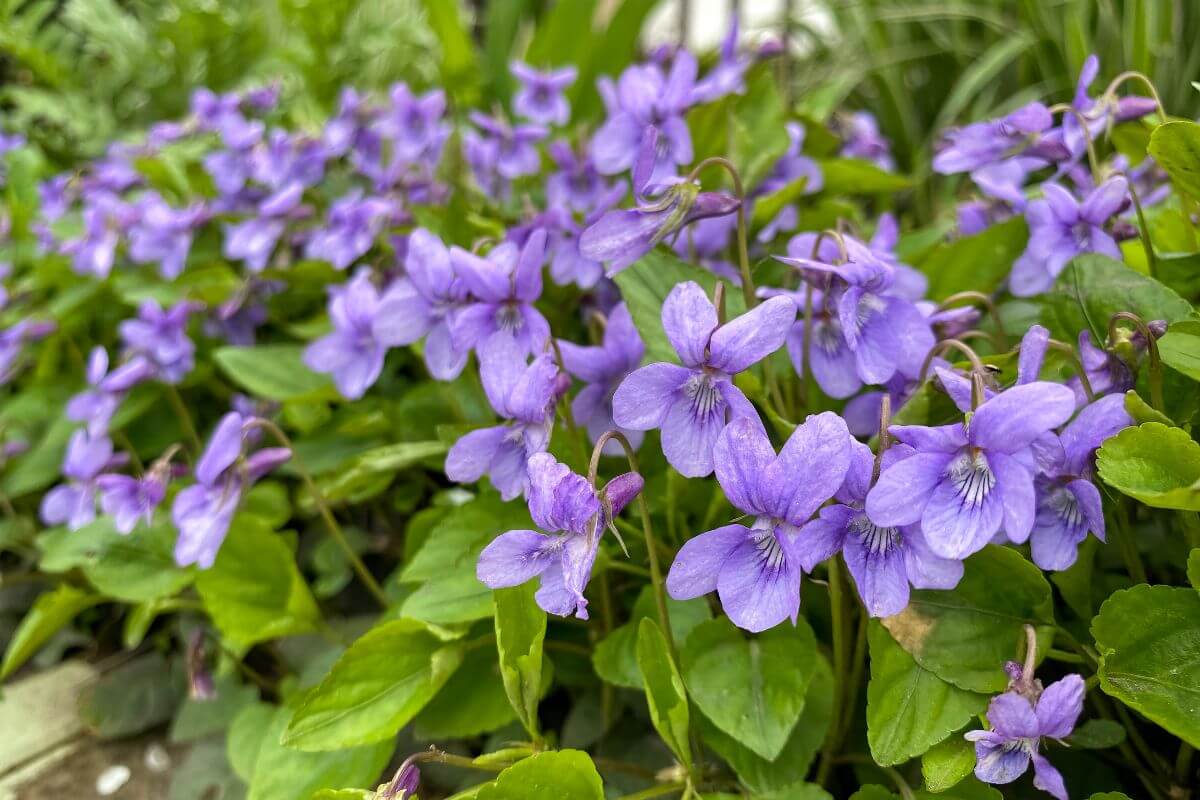
Despite their name, wild violets come in many colors. These include magenta, white, periwinkle, purple, and yellow flowers. They are among the first plants to bloom in the spring, making them an early food source.
Wild violets thrive in moist, shaded areas with good soil in many parts of the world, especially in North America and Europe. They often pop up on lawns, gardens, and paths.
Eating the entire violet plant is safe, except for the roots, which can make you sick. The leaves and flowers, however, are safe but nutritious and tasty. The raw young leaves work wonders in a salad. You can also cook them just like any other leafy green.
Violet leaves have vital vitamins and nutrients. These include vitamins A, B, K, and E, as well as antioxidants. They help fight inflammation.
Wild Edible Plants Final Thoughts
You can survive in nature by learning about edible plants and how to recognize them.
Once you do, you can go out into the wilderness to find them. Knowing which parts to eat is important, from the spiny Amaranth to the berry-like Juniper. You should know their nutritional value and which parts to avoid eating raw.
Remember, if you come across plants you don’t know, it’s safest to be cautious to avoid any harmful effects. So stay curious, keep learning, and let nature be your survival guide.
For more gardening information, check out these articles:
- How to Keep Animals Out of the Garden
- List of Flowers
- Fruit and Vegetable Differences
- Different Guides on Gardening
- https://outdoornebraska.gov/learn/outdoor-skills/foraging/edible-plants/
- https://mdc.mo.gov/wild-edibles-4
- https://homegrown.extension.ncsu.edu/2020/05/backyard-edibles/
- https://extension.umn.edu/natural-resources-news/wild-edibles-common-blue-violets
- https://news.ua.edu/2019/08/wild-eats-foraging-for-your-grub/
- https://extension.oregonstate.edu/catalog/pub/em-9373-wild-edibles-stinging-nettle
- https://commons.wikimedia.org/wiki/File:Sassafras_Leaves_June_Nbg_%28261691941%29.jpeg

